-
 bitcoin
bitcoin $122090.672462 USD
1.59% -
 ethereum
ethereum $4493.758974 USD
0.56% -
 xrp
xrp $3.033145 USD
0.65% -
 tether
tether $1.000629 USD
0.00% -
 bnb
bnb $1169.854250 USD
7.07% -
 solana
solana $230.954786 USD
-0.19% -
 usd-coin
usd-coin $0.999785 USD
0.00% -
 dogecoin
dogecoin $0.256108 USD
-1.12% -
 tron
tron $0.342333 USD
-0.12% -
 cardano
cardano $0.859632 USD
-0.10% -
 hyperliquid
hyperliquid $48.932146 USD
-2.25% -
 chainlink
chainlink $22.345466 USD
-1.29% -
 ethena-usde
ethena-usde $1.000217 USD
-0.03% -
 avalanche
avalanche $31.203456 USD
1.93% -
 sui
sui $3.579145 USD
1.05%
What is the "on-chain" activity shown in Coinbase Wallet?
On-chain activity in Coinbase Wallet shows your public, immutable blockchain transactions, including sends, swaps, and smart contract interactions.
Oct 04, 2025 at 07:54 am
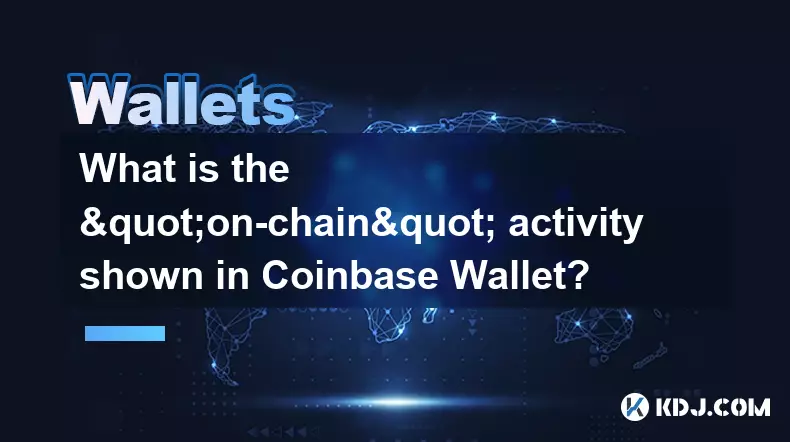
Understanding On-Chain Activity in Coinbase Wallet
On-chain activity refers to transactions and interactions that are recorded directly on a blockchain. When users view their on-chain activity within Coinbase Wallet, they are seeing a transparent, immutable record of every transfer, smart contract interaction, token swap, or wallet connection that has occurred using their public address.
This data is pulled from the blockchain itself, not from Coinbase’s internal systems, which means it reflects real-time, decentralized network behavior. Every action visible in the on-chain section has been verified by the network’s consensus mechanism—whether proof-of-work or proof-of-stake—and permanently stored across distributed nodes.
Key Components of On-Chain Data Visibility
- Transaction history including sent and received cryptocurrency amounts, timestamps, and associated fees.
- Smart contract executions such as approvals for token spending, NFT minting, or participation in decentralized finance (DeFi) protocols.
- Token transfers involving ERC-20, BEP-20, or other standard-compliant assets linked to the wallet address.
- Wallet-to-contract interactions like staking deposits, liquidity pool additions, or governance voting.
- Internal transactions triggered by contract logic, even if no direct fund movement occurs between external accounts.
How Coinbase Wallet Displays Blockchain Interactions
Coinbase Wallet acts as a non-custodial interface that connects users to multiple blockchains. It does not store private keys or control funds; instead, it reads and writes data directly onto the chain through user-signed messages. The wallet retrieves on-chain events via node providers or APIs such as Infura or Alchemy, which index blockchain data for efficient querying.
When a user performs an action—like swapping tokens through a decentralized exchange—the wallet broadcasts a signed transaction to the network. Once confirmed, this event becomes part of the public ledger. Coinbase Wallet then fetches and displays this information in chronological order, often enriching raw data with human-readable labels for better usability.
Types of On-Chain Events Tracked by the Wallet
- Native cryptocurrency transfers (e.g., ETH, MATIC) showing sender, receiver, value, gas cost, and confirmation status.
- Token approval events where a user authorizes a smart contract to access their tokens up to a specified limit.
- NFT-related actions including mints, sales, bids, and transfers across platforms like OpenSea or Blur.
- DeFi interactions such as lending, borrowing, yield farming, and flash loans executed on protocols like Aave or Uniswap.
- Contract deployments initiated by the wallet owner, typically seen when launching new tokens or creating DAOs.
Security and Transparency Implications of On-Chain Tracking
The visibility of on-chain activity enhances transparency but also raises privacy considerations. Since all transactions are publicly accessible, sophisticated analysis tools can potentially link addresses to identities, especially when combined with off-chain data. Coinbase Wallet mitigates some risks by emphasizing user control over keys and avoiding mandatory KYC for wallet creation.
However, once an address is tied to real-world identity—through exchange withdrawals or service usage—all past and future transactions become traceable. This underscores the importance of understanding how each on-chain action contributes to a permanent digital footprint.
Why Monitoring On-Chain Behavior Matters
- Users can detect unauthorized spending approvals or suspicious contract interactions early.
- Investors analyze wallet activity patterns to assess project engagement or whale movements.
- Developers verify successful execution of dApp functions and debug failed transactions.
- Auditors use on-chain records for compliance checks, forensic investigations, or tax reporting.
- Community members track protocol usage metrics derived from actual user behavior rather than estimates.
Frequently Asked Questions
What does a 'pending' transaction mean in on-chain activity?A pending transaction is one that has been broadcast to the network but not yet included in a block. It waits in the mempool until miners or validators process it, which depends on gas fees and network congestion.
Can I hide my on-chain activity from Coinbase Wallet?No. If a transaction occurs on the blockchain, it is publicly visible. While Coinbase Wallet doesn’t report your activity to third parties by default, the blockchain itself is open to anyone with internet access.
Why do some transactions show 'Contract Interaction' instead of a simple transfer?This label appears when the transaction involves executing code within a smart contract, such as providing liquidity or claiming rewards, rather than sending funds directly to another person.
Does viewing on-chain activity require internet connectivity?Yes. Accessing real-time blockchain data requires connection to node services. Offline mode only allows key management and signing; it cannot display updated transaction histories.
Disclaimer:info@kdj.com
The information provided is not trading advice. kdj.com does not assume any responsibility for any investments made based on the information provided in this article. Cryptocurrencies are highly volatile and it is highly recommended that you invest with caution after thorough research!
If you believe that the content used on this website infringes your copyright, please contact us immediately (info@kdj.com) and we will delete it promptly.
- BlockDAG, DOGE, HYPE Sponsorship: Crypto Trends Shaping 2025
- 2025-10-01 00:25:13
- Deutsche Börse and Circle: A StableCoin Adoption Powerhouse in Europe
- 2025-10-01 00:25:13
- BlockDAG's Presale Buzz: Is It the Crypto to Watch in October 2025?
- 2025-10-01 00:30:13
- Bitcoin, Crypto, and IQ: When Genius Meets Digital Gold?
- 2025-10-01 00:30:13
- Stablecoins, American Innovation, and Wallet Tokens: The Next Frontier
- 2025-10-01 00:35:12
- NBU, Coins, and Crypto in Ukraine: A New Yorker's Take
- 2025-10-01 00:45:14
Related knowledge
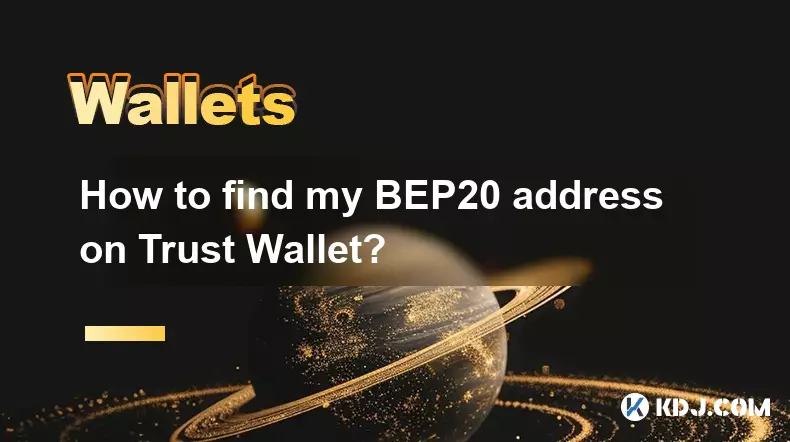
How to find my BEP20 address on Trust Wallet?
Oct 04,2025 at 06:19pm
Understanding BEP20 and Trust Wallet Compatibility1. Trust Wallet is a widely used cryptocurrency wallet that supports multiple blockchain networks, i...
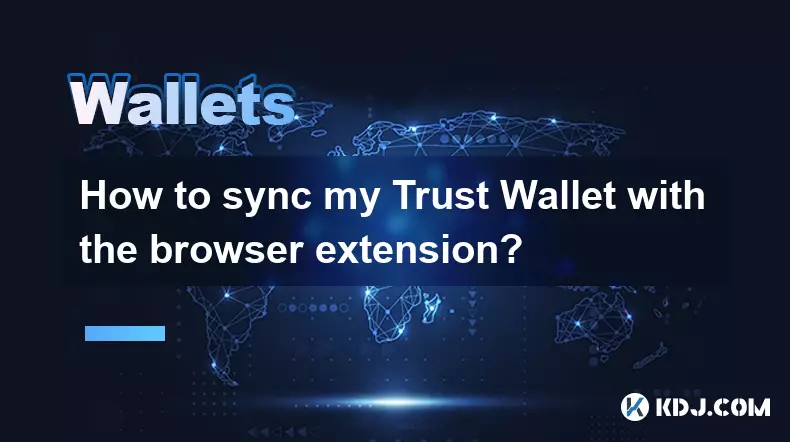
How to sync my Trust Wallet with the browser extension?
Oct 03,2025 at 06:19pm
Understanding Trust Wallet and Browser Extension IntegrationTrust Wallet is a popular non-custodial cryptocurrency wallet that supports a wide range o...
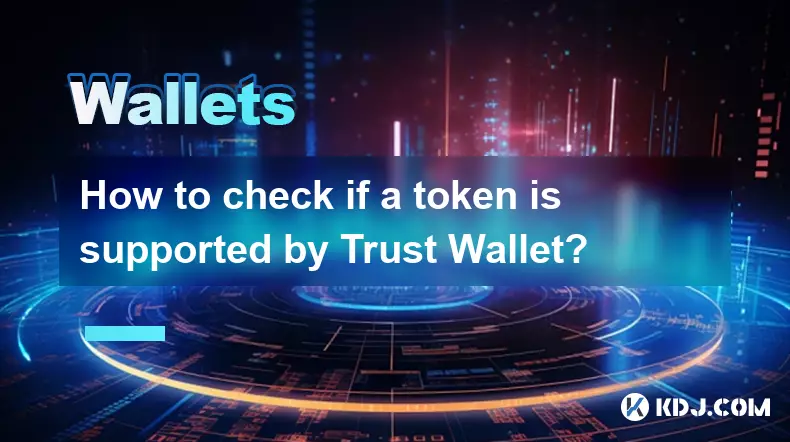
How to check if a token is supported by Trust Wallet?
Oct 04,2025 at 05:18am
Understanding Token Compatibility with Trust Wallet1. Trust Wallet supports a wide range of blockchain networks, including Ethereum, Binance Smart Cha...

How to get the Trust Wallet browser extension?
Oct 01,2025 at 12:37am
How to Access the Trust Wallet Browser Extension1. Visit the official Trust Wallet website through a secure internet connection. Navigate to the downl...

How to interact with a DApp using Trust Wallet?
Oct 02,2025 at 10:00pm
Connecting Trust Wallet to a DApp1. Open the Trust Wallet app on your mobile device and ensure your wallet is unlocked with access to your assets. Nav...
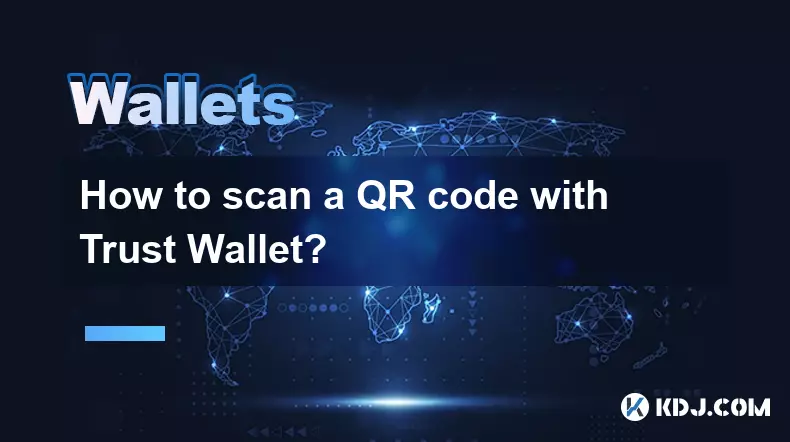
How to scan a QR code with Trust Wallet?
Oct 02,2025 at 03:37pm
Understanding QR Codes in Trust Wallet1. QR codes are widely used in cryptocurrency applications to simplify transaction processes. Trust Wallet lever...

How to find my BEP20 address on Trust Wallet?
Oct 04,2025 at 06:19pm
Understanding BEP20 and Trust Wallet Compatibility1. Trust Wallet is a widely used cryptocurrency wallet that supports multiple blockchain networks, i...

How to sync my Trust Wallet with the browser extension?
Oct 03,2025 at 06:19pm
Understanding Trust Wallet and Browser Extension IntegrationTrust Wallet is a popular non-custodial cryptocurrency wallet that supports a wide range o...

How to check if a token is supported by Trust Wallet?
Oct 04,2025 at 05:18am
Understanding Token Compatibility with Trust Wallet1. Trust Wallet supports a wide range of blockchain networks, including Ethereum, Binance Smart Cha...

How to get the Trust Wallet browser extension?
Oct 01,2025 at 12:37am
How to Access the Trust Wallet Browser Extension1. Visit the official Trust Wallet website through a secure internet connection. Navigate to the downl...

How to interact with a DApp using Trust Wallet?
Oct 02,2025 at 10:00pm
Connecting Trust Wallet to a DApp1. Open the Trust Wallet app on your mobile device and ensure your wallet is unlocked with access to your assets. Nav...

How to scan a QR code with Trust Wallet?
Oct 02,2025 at 03:37pm
Understanding QR Codes in Trust Wallet1. QR codes are widely used in cryptocurrency applications to simplify transaction processes. Trust Wallet lever...
See all articles










































































